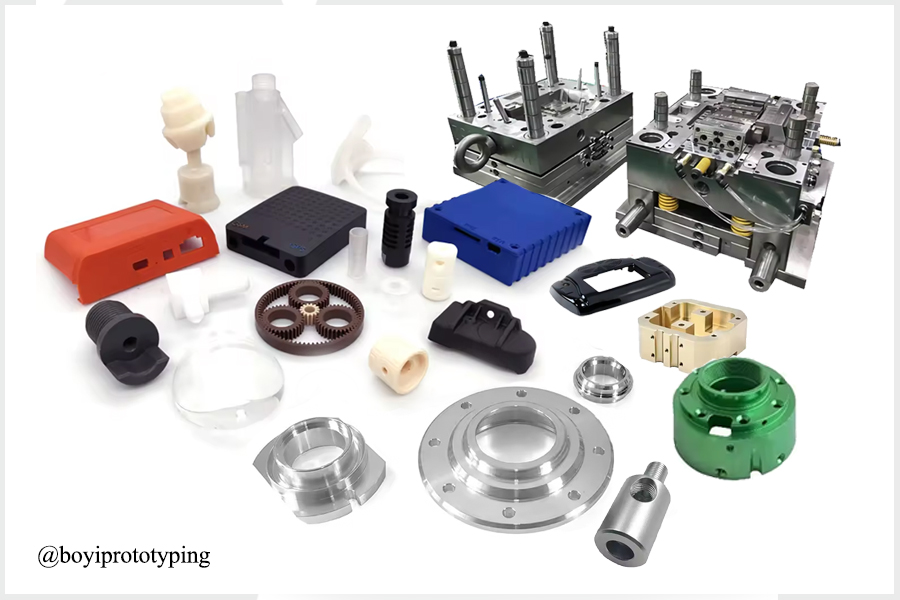
Known for its exceptional chemical resistance, low friction, and high-temperature stability, PTFE is the material behind the iconic non-stick coating on your frying pan. But its use extends far beyond the kitchen, especially in the world of manufacturing and engineering. But how does PTFE injection molding work, and why is it so effective? Let’s dive into the details.
What is PTFE and Why Use It?
PTFE is a high-performance polymer often associated with its brand name, Teflon®. It’s renowned for its resistance to acids, bases, and solvents, as well as its ability to function effectively at high temperatures (up to around 260°C or 500°F). These qualities make PTFE a go-to material for industries ranging from aerospace to pharmaceuticals.
Here’s a table outlining the properties of PTFE:
| Property | Value |
|---|---|
| Density | 2.1 – 2.3 g/cm³ |
| Melting Point | 327°C (621°F) |
| Thermal Conductivity | 0.25 W/m·K |
| Water Absorption | < 0.01% |
| Coefficient of Thermal Expansion | 100 – 200 x 10⁻⁶ /°C |
| Tensile Strength | 20 – 35 MPa |
| Elongation at Break | 200 – 400% |
| Hardness (Shore D) | 50 – 65 |
| Compressive Strength | 15 – 25 MPa |
| Flexural Modulus | 500 – 700 MPa |
| Injection Temperature | 360°C – 400°C (680°F – 752°F) |
| Mold Temperature | 100°C – 150°C (212°F – 302°F) |

The Basics of PTFE Injection Molding
PTFE injection molding is a process where polytetrafluoroethylene (PTFE) resin is heated until it becomes a molten state and then injected into a mold to form various parts. Unlike traditional injection molding, which involves thermoplastic materials, PTFE is a thermosetting polymer. This means it cannot be melted and re-melted, making its processing a bit different.
Key Benefits of PTFE Injection Molding
- Tight tolerances ensure parts fit seamlessly in assemblies.
- High-speed cycles minimize lead times.
- Durable molds provide consistent results over time.
- Scrap rates are low due to precision molding.
- Less manual labor required, enhancing safety and efficiency.
- Reduced material waste and energy consumption.
- PTFE’s high strength-to-weight ratio is ideal for various applications.
- Suitable for harsh environments or chemicals.
- Increases part lifespan and reduces maintenance costs.
- PTFE’s unique properties allow for use in diverse industries and applications.
PTFE Injection Molding Process
The PTFE injection molding process begins with designing the part using CAD software and creating a precision-machined mold from steel or aluminum. PTFE powder is then mixed with a processing aid and extruded into a semi-molten rod called a billet. This billet is loaded into an injection molding machine, heated to around 660°F (350°C), and injected into the mold under high pressure. After the PTFE cools and solidifies, the mold opens, and the part is ejected. Post-processing may involve trimming or finishing the part. Finally, each component undergoes strict quality control checks to ensure it meets all specifications and standards.

Applications of PTFE Injection Molding
PTFE injection molded parts are used across various industries due to their unique properties. Some common applications include:
- Aerospace components
- Chemical-resistant seals and gaskets
- High-performance electrical insulators
- Non-stick coatings for cookware
- Laboratory equipment
- Medical device components
- Automotive fuel system parts
- Pump and valve components
- Bearings and bushings in industrial machinery
- Linings for chemical processing equipment
- Pharmaceutical processing equipment
- Food processing machinery
- Oil and gas industry components
- Semiconductor manufacturing parts
- Cryogenic seals and components

Challenges and Solutions in PTFE Injection Molding
Despite its advantages, PTFE injection molding presents some unique challenges due to PTFE’s high melt viscosity and low thermal conductivity. Here are a few solutions to overcome these hurdles:
- Using Processing Aids: Adding a small amount of lubricant or processing aid to the PTFE powder improves flowability and reduces the risk of mold sticking.
- Optimized Mold Design: Careful mold design with proper venting and cooling channels minimizes warping and ensures even cooling of the PTFE part.
- Temperature and Pressure Control: Precise control of injection temperatures and pressures is crucial to achieving a smooth flow of molten PTFE and minimizing defects.
Partner with BOYI for PTFE Injection Molding
If you’re considering PTFE for your next project, make sure to work with a knowledgeable team that understands the intricacies of this material and can help you achieve the best results.
BOYI offers expert PTFE injection molding services, combining precision with high-performance materials to deliver parts that stand up to the toughest demands. Contact us today to discuss your specific needs and discover how we can help you achieve top-quality results!

Let’s Start A New Project Today
Our engineers will contact you within 2 hours.
FAQ
Catalog: Injection Molding Guide

This article was written by engineers from the BOYI team. Fuquan Chen is a professional engineer and technical expert with 20 years of experience in rapid prototyping, mold manufacturing, and plastic injection molding.







